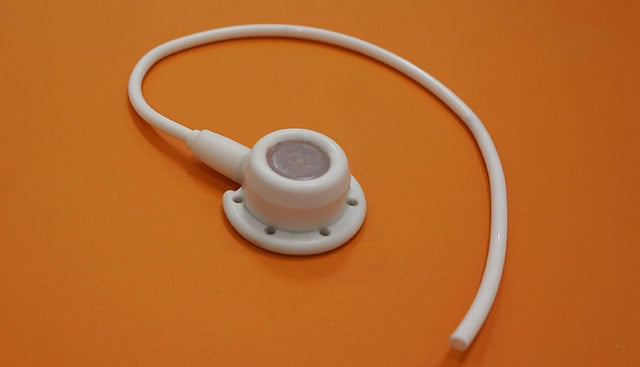What Is a Chemo Port?

Helpful Videos:
Ports for Chemo and Other Uses: Overview and Placement
Ports for Chemo and Other Uses: Access and Care
What is a Peripherally Inserted Catheter?
A chemo port is a small, implantable reservoir with a thin silicone tube that attaches to a vein. The main advantage of this vein-access device is that chemotherapy medications can be delivered directly into the port rather than a vein, eliminating the need for needle sticks.
Many people who receive chemotherapy choose to have a port implanted if recommended by their treatment team. If you’re interested in a chemo port, consider this information provided by the infusion center team at Moffitt Cancer Center.
Where is a chemo port implanted?
Usually, a chemo port is centrally placed under the skin near a large vein in the upper chest. This can be a good alternative to an intravenous (IV) catheter that is peripherally placed in an arm or hand vein (a suitable IV site can sometimes be difficult to find). Easily accessible by a patient’s treatment team, a port can provide a safer and more efficient medication delivery process than an IV. And, while a port will produce a visible, quarter-sized “bump” under the skin, it can be easily covered with regular clothing.
How long can a chemo port remain in place?
Unlike an IV catheter, which must be reinserted for each treatment session, a port can remain in place as long as necessary – for several weeks, months or even years. When it is no longer needed, the port can be removed through a relatively simple outpatient procedure.
Does a chemo port provide any other advantages over an IV catheter?
In addition to streamlining the delivery of chemotherapy medications, a port can provide several other benefits as compared to an IV catheter:
- A port site is prepared with a sterile technique, which ensures that all surfaces are free of microorganisms and thus greatly reduces the risk of infection (an IV site is prepared with a clean but nonsterile technique).
- A port can also be used for delivering fluids and transfusions, drawing blood for lab testing and injecting dye for PET and CT scans.
- A port reduces the risk of medications coming into contact with – and possibly irritating – the skin.
- A port can be used to provide treatments that span several days.
If you have further questions, you are welcome to talk with an expert at Moffitt. Call 1-888-663-3488 or complete our new patient registration form online.
